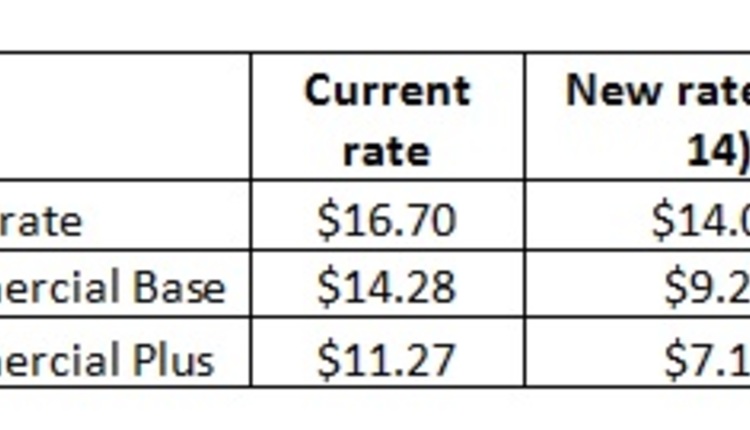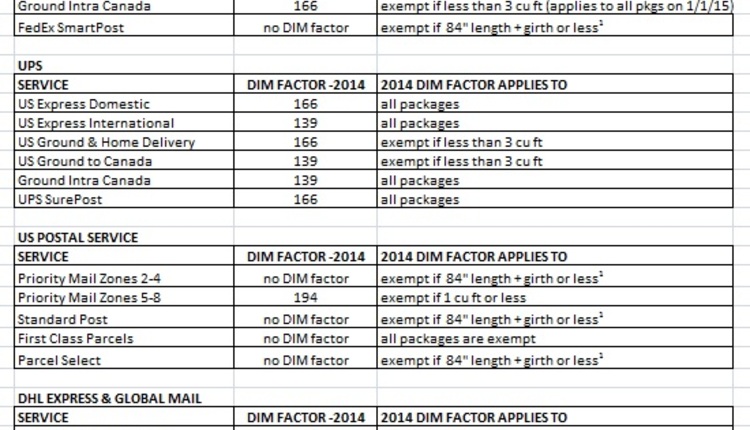Back in the last century, the Internet was going to be the great leveler in the mail order industry (if you remember the term Mail Order, you may be older than some of the new start-ups!). And in many ways, its turned out just that way: a creative David (or Denise) with a great idea and a killer website can go toe-to-toe with the Goliaths of the world. After all, when someones ordering from your site, they have no idea whether youre shipping out of a brand new, one million square foot distribution center or just a spruced-up corner of your garage (unless, of course, you still have one of those oh-so-nineties web counters showing 000036 hits!).
However, there is one place where the Big Kahunas have it all over the 100-pound weaklings, and thats in average shipping cost per unit. And I probably dont have to remind you that your shipping cost is likely to be second only to the cost of the product itself. And herewith is the dirty little secret: the big guys get a much bigger shipping discount than you do!
There, Ive said it. That gigantic megasite is in all likelihood paying about half what youre paying for shipping. Talk about a competitive disadvantage, when profit margins are often measured in coins made of copper! But there are a few secrets that can help level that playing field, and here they are:
1. Get a handle on your true cost of shipping the results might shock you. Sure, you may have shipped it out for only four bucks, but then you got hit with backcharges for Residential ($2.10), Rural (as in Malibu, another $2.10 Im not kidding, look it up), Fuel, Dimensional Weight, Additional Handling, Signature, OS3 (thats the new one), ad infinitum, and now your four dollar package is pushing ten bucks! Do your homework, check your invoices. Its a pain, but do it every week. Consider this your starting point.
2. Get a handle on your competitors cost of shipping. Might not be as tough as you think. Go to trade shows, read the press, even (gasp!) talk to your competitors. Its called networking. The results may surprise as well as depress you.
3. Do what you can do to reduce the burden on your carrier, before you ask for a discount. Make sure that your addresses are as good as possible and that theyve got apartment or suite numbers when needed. Use CASS and RDI. (And if you dont know what these are, find out.) Check your cube the better the cube, the better the discount.
4. Get your damage and lost package claims as low as possible. Nothing will kill a good discount faster than a high damage ratio. Use the carriers' package testing labs (they all have them, and theyre free).
5. Make sure youre using the right combination of carriers. Each of the carriers have their strengths and weaknesses, so play to their strong points. For instance, a particular carrier might do a sterling job of delivering B to B packages in metropolitan areas, but their service on B to C shipments to rural areas may be tarnished. And dont forget the post
6. Once youve done the above, ask your carrier for a discount, and tell them why you deserve one. Dont make the mistake of thinking youre too small to get a discount. This might be a good time to bring in some professional consulting help. Usually, consultants are compensated only on the additional savings. Be specific with the carrier and shoot a little high, but be realistic, and above all, be honest. Do your homework. Tell them what your competition is paying to ship their widgets. Share your plans with them: where you plan to be in six months, two years, and how you need their help now to get there. And that if they treat you right now, youll stick with them when your shipping volumes shoot through the roof. Cajole. Beg. Horse trade. Stand firm. And in the end, you just might be surprised with what you get!














